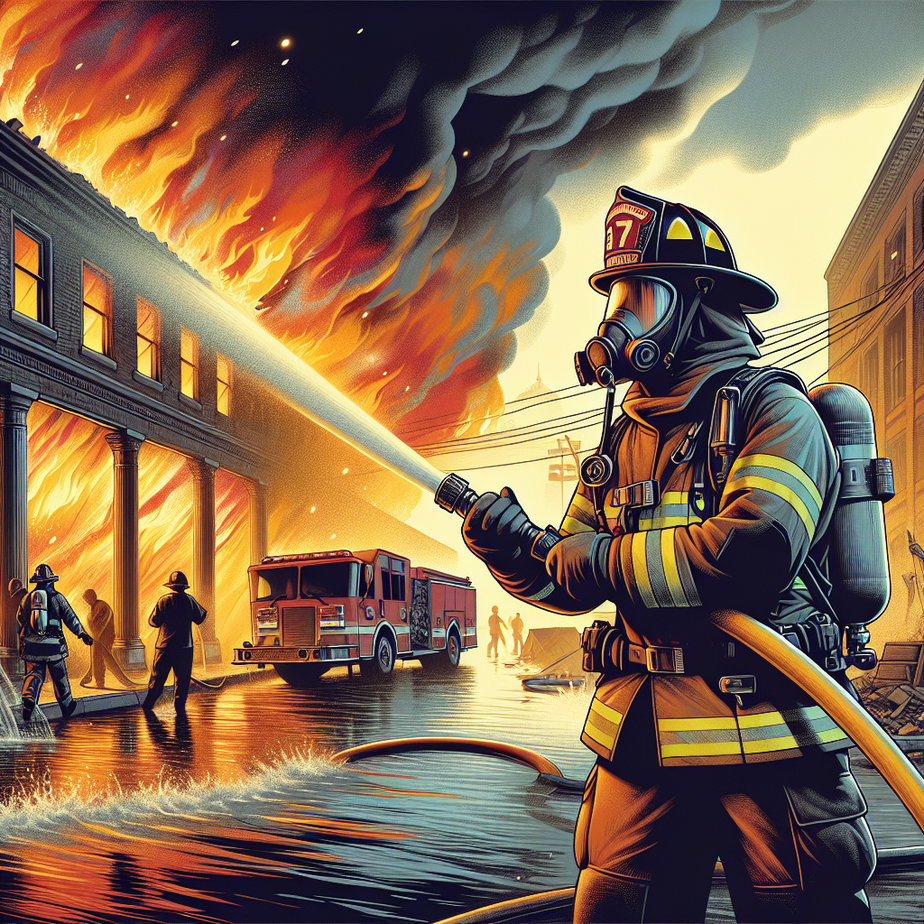🔥 When you think of firefighting, you probably picture brave men and women battling massive bushfires, saving koalas, and looking absolutely legendary while covered in soot. But what happens when firefighters are called to a scene where there’s more than just flames to fight—where an Active Shooter/Hostile Event Response (ASHER) is needed?
Welcome to a whole new level of crisis response, where Australian firefighters must be ready to handle any active threat while keeping themselves and the public safe. 🚒💨
🏃♂️ 1. Situational Awareness: Firefighters Need Eyes in Every Direction
Imagine running into a burning building, only to realize the fire isn’t the biggest danger. Active threats, such as an armed aggressor, can escalate a routine emergency into a high-risk operation.
🔥 Stay switched on! Firefighters need to constantly assess risks around them. This means doing more than just looking out for collapsing walls or flammable gas leaks—it’s about recognizing suspicious movement, identifying threats, and knowing viable escape routes.
👀 Top Tip: Keep scanning. If your gut says something feels “off,” trust it. Communicate with your team and never assume a scene is 100% safe.
🦺 2. The Buddy System: Because No One Fights Alone
If Australian firefighters had a rule number one, it would be this: NEVER go in alone. Whether it’s a roaring bushfire or an ASHER event, pairing up ensures safety, support, and sharper decision-making under pressure.
🚒 Why it works:
✔️ Two sets of eyes are better than one. Your mate might spot a hidden danger you missed.
✔️ Immediate backup matters. In hostile situations, a second set of hands can be the difference between making it out or getting caught in danger.
✔️ Stronger decision-making. Stress levels skyrocket in high-threat environments, and a second opinion may just save the day.
👬 Combat Rule: If one of you is going in, you’re both going in—together. No lone wolves.
🗣️ 3. Communication is Key: Say it Loud, Say it Clear
Ever played the game Chinese Whispers? Yeah, it’s fun until a miscommunication in an emergency turns a dangerous situation into a complete disaster.
🚨 During an ASHER event, there’s no time for confusion. Every firefighter must understand their role, location, and mission objectives with absolute clarity. This means:
📡 Using radio comms effectively – Keep it short, clear, and direct. No long stories!
🎤 Repeating critical commands – If you don’t hear a confirmation, repeat.
🗺️ Pre-established signals and plans – Every second counts, and body signals, hand gestures, or pre-planned escape calls can save lives.
🎤 Golden Rule: Speak clearly, listen actively, and when in doubt—DOUBLE-CHECK!
🔐 4. Secure and Defend: The Right Time to Fight Fire with Strategy
Traditional firefighting is all about running toward the flames, but during an ASHER event, survival sometimes means holding the ground strategically.
🚧 Defensive Positioning – If a hostile threat is still active, find cover and concealment. A fire truck isn’t just for fighting fires—it’s mobile cover with bullet-resistant surfaces.
🛑 Deny Entry – Sometimes, the best move is securing an area rather than blindly entering. Reinforce doors, block access points, and don’t create unnecessary risk.
🤝 Work with Law Enforcement – Aussie firefighters play a vital role in rescue and medical support. The police will clear out the immediate threat—fire crews stabilize survivors and prevent further danger. Teamwork makes the firefighting dream work. 🚔
💡 Tactical Advice: If there’s ongoing danger, don’t engage unnecessarily—protect the injured, secure exits, and wait for the all-clear.
🏥 5. Medical & Rescue: Firefighters are First Responders, Too
🎭 Firefighters don’t just put out fires—they also save lives in countless other ways. In an ASHER situation, medical assistance becomes just as urgent as extinguishing flames. 🚑
🔥 What Australian firefighters must be ready for:
✅ Triage Training: Knowing who needs treatment first is crucial.
✅ Stop the Bleed Skills: A bullet wound? Blast injury? Basic trauma care can buy precious time before medics arrive.
✅ Evacuation Tactics: Moving injured victims to safety without triggering more chaos is an art in itself.
🚑 Firefighters often deliver life-saving aid while under immense stress. It’s a harsh reality, but every second matters. Being prepared makes the difference.
🎯 Final Thoughts: Training Saves Lives
Surviving and responding effectively in an ASHER event isn’t about luck—it’s about preparation, teamwork, and smart decision-making.
🔥 Australian firefighters aren’t just heroes battling flames—they’re critical responders in life’s most unpredictable emergencies.
So next time you see a firefighter, give them a nod of respect. They’re not just fighting fire—they’re protecting all of us from whatever comes next. 🚒💨
🗣️ Your Turn!
What do you think of these firefighting strategies? Have you or someone you know ever been in a high-risk emergency?
Drop your thoughts in the comments below! And if you’re inspired, share this post with someone who’d appreciate a closer look at the world of Australian firefighting! 🚒🔥



